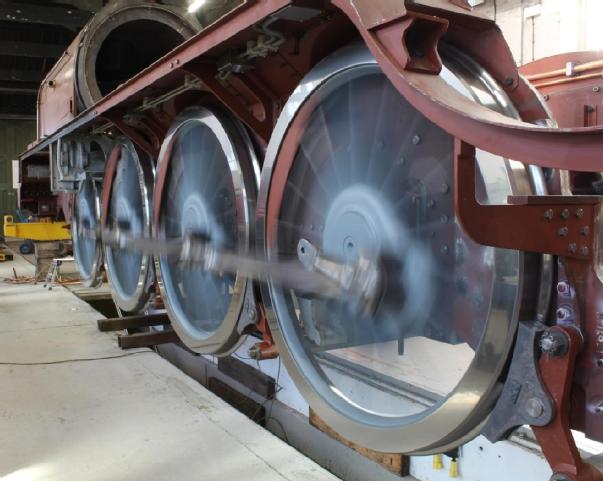Success Story Assetbank
Heritage locomotive project picks up steam through WMG support
“WMG’s support on this project has been invaluable. The advice we have received from Dr Lansdell has enabled us to look at options that we never would have considered before that have the potential to save the project tens of thousands of pounds.”
Martin Shepherd, Director, 3D Heritage
Challenge
SME 3D Heritage has been working with registered charity The A1 Steam Locomotive Trust (A1SLT)Link opens in a new window on a mission to revive long-lost steam locomotive designs. Their new project is to build a Gresley class P2 steam locomotive No. 2007 Prince of Wales at its Darlington Locomotive Works (DLW). The original class P2s were designed by Sir Nigel Gresley to haul 600 ton trains on the arduous Edinburgh to Aberdeen route, however sadly, the design was never fully developed.
With new technology and expertise, the Trust and 3D Heritage wanted to bring the class P2s back to life. The project has already come a long way with a whole range of parts in development, however there were some specific design and materials challenges with the original Lentz valve gear and cambox (the box that houses the valve gear mechanism) that the consortium needed to resolve.

Solution
With around 120 parts, the cambox is one of the most complicated assemblies within the locomotive. Before committing to spending money on patterns, castings, and machined components, 3D Heritage and the Trust needed to ensure that the overall concept was functionally correct and that they could manufacture and assemble the many parts.
WMG's Dr Paul Lansdell who has a range of experience in metallurgy and was previously the Chief Mechanical Engineer at the Dean Forest Railway created a CAD model of the designs that could be tested and amended. He recommended the use of 3D printing in ABS plastic to create a one-third scale model of the cambox for the team to see if any changes were required to the parts before committing to manufacture. The box also featured a series of windows that enabled the engineering team to see what was happening with the valve mechanism on the inside. Following the creation of the model, Dr Lansdell explored the material grades, surface coatings and heat treatment which had previously caused issues. He then used 3D printing to create sand moulds to manufacture various parts of the locomotive. Developing patterns for sand casted metal parts can be extremely expensive and if there is an issue with the casting of the part it can be costly to start the process again.
Impact
- This work has been extremely transformative, giving the project a huge advantage for making reliable and durable valve gear.
- The model of the cambox was used to educate sponsors and donors of the inner workings of the Lentz-Franklin valve gear resulting in additional funding for the project
- The introduction to modern materials and treatments will optimise the performance of the locomotive, giving the project the sustainability and durability that was vitally missing in the original designs by Sir Nigel Gresley back in the 1930s.
- Using 3D printing to create the cambox model and potentially the castings to create actual final parts will save 3D Heritage and the Trust tens of thousands of pounds
“I have been honoured to work on this prestigious project which has allowed us to apply leading edge research and new techniques on a real-world business case.” Dr Paul Lansdell, WMG
Please click here for more information about WMG's support for SMEs


